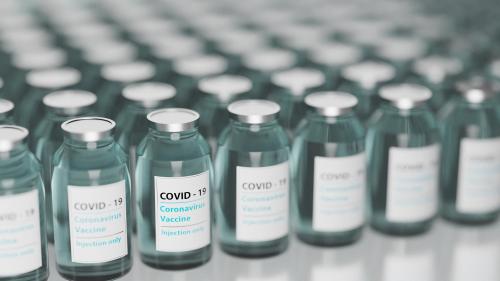The past two years have seen dramatic changes in general practice, driven in large part by the COVID-19 pandemic. Telephone, video and online appointments are here to stay, not only for the doctors but for the other patient-facing staff regularly employed at GP practices – such as nurses, pharmacists and now link workers. With general practice appointments hitting the highest numbers on record (34.8 million in England alone in November 2021), careful organisation and planning for patient appointments is increasingly important.
Analysis and modelling of patient flow can be hugely beneficial in planning. Unfortunately, the vast majority of GP surgeries don’t have access to such expertise. That’s something we set out to address in a recent project, funded by the Health Foundation, in which we aimed to bring general practice and analysts together across the country to solve some of the real-world problems GPs are facing.
We focused principally on improving GP appointment systems, in close partnership with Primary Care Networks. Our aim had been to train analysts in simulation modelling; then match them up with I surgeries to develop answers to some of their individual issues.
As an analyst myself, I specialise in a modelling technique called ‘discrete event simulation’ (DES). It’s a way of testing out various different scenarios and finding out what impact each will have.
Using DES, we can look at the comparative flow of patients through an appointments system when several different factors are at play. Factors that might include level of patient demand, staffing considerations, and changes to the system itself, for example. We can also capture the resulting impact on outcomes such as caller waiting times and staffing requirements. This allows decision makers to test options before taking them - trying things out in principle before enacting them in practice.
Pivoting in a pandemic: how can DES help with vaccine clinics?
Our project started in late 2019, so the emergence of the COVID-19 pandemic presented us with some considerable challenges. While we had to scale back the size of the project, we were still able to work closely with two centres and train analysts virtually. We were also able to apply DES to one of the biggest logistical challenges the NHS has ever faced: vaccine clinics.
The first centre we worked with was Wolverhampton Prevention and Population Health Unit. In early 2021, they asked if we could help the team there to develop a DES model they needed for planning vaccination clinics.
Specifically, the team wanted to model things like carpark capacity, queue lengths (for socially distancing) and flows of patients between stages in the process. Their aim here was to maximise the number of people who could receive the vaccine on a given day - whilst minimising the queuing time of vulnerable patients.
With our assistance, the Wolverhampton team was able to rapidly develop a local model which helped to inform the design and delivery of vaccine centres across the city. We’ve now developed this local model into one with more general applicability. This proved hugely popular, suggesting an appetite for open-source, domain-specific simulation tools within the NHS.
Finding the best options for one GP practice
We were also able to work closely with one general practice – Lion Health in Stourbridge, with around 30,000 patients – to plan a post-Covid telephone staffing model. Just prior to the pandemic, the practice introduced a new ‘Babblevoice’ phone system. During the pandemic the practice changed appointment management to triage face-to-face appointments, delaying patients entering the building until contacted.
Each week, the practice was handling an average of 2,268 call attempts to the appointment line. Data showed that over 30% of callers were waiting longer than ten minutes, although the average wait was 8.8 minutes. Nearly a quarter of all calls were attempted in the first half hour of each day.
The practice initially hoped to be able to answer 95% of appointment calls within 10 minutes. But using the simulation packages, we showed that this would be impossible unless staffing levels were to increase substantially.
Together we looked at various alternative scenarios to cope with the rising demand. Combinations of staffing and different rotas were explored, looking at under-utilisation and reallocating available capacity to busy times. Queuing parameters were also explored: should the number of callers be limited, or would this be counter-productive?
By altering schedules and staffing in a trial of 100 simulated runs, the team found several options, including an optimised plan, whereby 88% of callers would wait less than 10 minutes.
Lion Health was able to incorporate aspects of the proposed solution. For example they tried: limiting the number of calls in the queue to 60; recruiting three new staff; and making certain rota amendments. The practice now calls in extra support from other staff across the practice, who have learnt and improved in answering patients queries and finding them appointments. Perhaps most importantly they are now looking at capacity and demand in a more systematic way, rather than simply ‘how it feels on the day’.
Going forward, we hope to develop this simulation approach as a service we can offer to GP practices, as well as completing our online tool development with simple instructions so that it can be used for rota planning.
Through this project I think we’ve proved that analysis can help GP practices make simple but effective changes. Analysis shouldn’t only be used by bigger healthcare organisations - it can help practices of all sizes make better-informed planning decisions.
This project is part of the Health Foundation’s Advancing Applied Analytics programme. The Health Foundation is an independent charity committed to bringing about better health and health care for people in the UK


